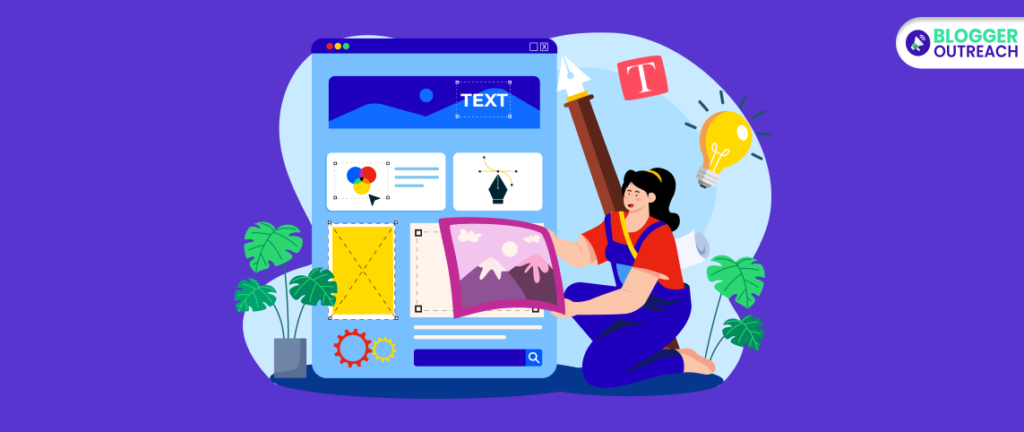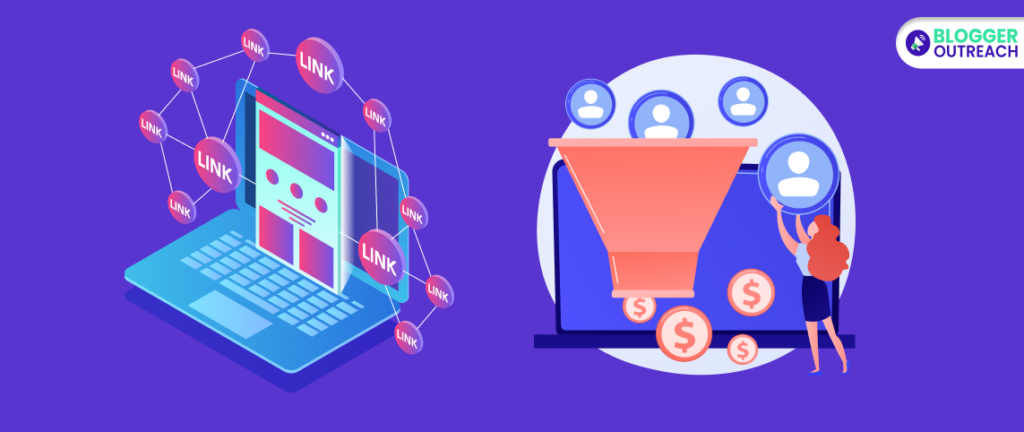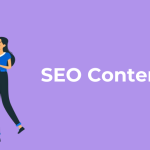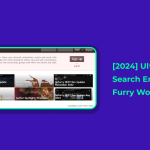Table Of Content
- 1 What Is Meant By Inbound Marketing?
- 2 What Are Examples Of Inbound Marketing?
- 3 Difference Between Inbound And Outbound Marketing
- 4 Five Fundamentals Of Inbound Marketing
- 5 Top 15 Inbound Marketing Tips For Brands
- 5.1 1. Develop A Content Strategy
- 5.2 2. Keep Track Of Your Result
- 5.3 3. Master Your Technical SEO
- 5.4 4. Segment Your Audiences
- 5.5 5. Level Up Your Game Of Social Media
- 5.6 6. Survey Your Current Customers And Leads
- 5.7 7. Conduct In-Depth Interviews
- 5.8 8. Create And Share Compelling Content
- 5.9 9. Writing Enticing Headlines
- 5.10 10. Make Your Content More Visual
- 5.11 11. Write In-Depth Data-Driven Articles
- 5.12 12. Use Storytelling In Your Content
- 5.13 13. Make A Habit Out Of Guest Posting Consistently
- 5.14 14. Maximize Your Results From SEO With Keyword Optimization
- 5.15 15. Better Backlink Profile = More Inbound Leads
- 6 Conclusion
Do you want to increase your traffic organically without spending money on ads or making cold phone calls? Well, there is a way to do that.
Have you ever heard of inbound marketing ideas? Yes, it is the way to grow your traffic organically.
But in order to implement this in your marketing strategy, first, you need to gather some ideas about inbound marketing.
What Is Meant By Inbound Marketing?

I know a question is hovering in your mind, “What is inbound marketing?”
In simple terms, the process in which you help your potential customers in finding your company is addressed as inbound marketing. It is a strategy, that utilizes many forms of pull marketing, like content marketing, events, blogs, search engine optimization or SEO along with social media, and many more, in order to develop brand awareness and attract new customers.
What Are Examples Of Inbound Marketing?
Here are some of the examples, that you also can consider when you are developing marketing strategies for your business.
- A blog
- An infographic
- A whitepaper
- An eBook
- A case study
- A webinar
- A podcast
- A video series
- Search Engine Optimization (SEO)
Difference Between Inbound And Outbound Marketing
As we now know the definition of inbound marketing, let’s head toward the differences that inbound and outbound marketing have between them.
Inbound vs. Outbound Marketing
| Inbound Marketing | Outbound Marketing |
| It solves consumer’s needs. | It is written in order to sell products. |
| In inbound marketing blogs, websites, SERPs, eBooks, social media, and opt-in emails. | Here, communication is mainly one way. |
| The audience becomes the lead as soon as helpful content is consumed. | It disrupts whatever content has been consumed. |
| In inbound marketing blogs, websites, SERPs, eBooks, social media, and opt-in emails. | In outbound marketing TV ads, pop-up internet ads, billboards, magazines, and telemarketing. |
Five Fundamentals Of Inbound Marketing
When you are digging this deeper, you can not miss these five fundamentals. It does not matter what your brand or company is dealing with or which type of audiences they are targeting, and these five fundamentals are the key.
- The main motivation of inbound marketing is attracting the right audiences. So, before starting, make sure you have a proper idea about who your target audiences are.
- It is all about delivering helpful content to your target audiences on the basis of their needs. So, it is also crucial to understand the buyer journey of your target audiences.
- Once you are done with specifying the buyer’s persona and understanding their buyer’s journey, it is time to help them with not only the products or services but also with some helpful advice and industry insights.
- To keep the pain points of your target audiences, you need to identify and utilize those keywords that your target audiences are searching for. Those phrases that your personas are using to get their answers are the bridges between their attention and your content.
- When you truly understand your audiences and provide them useful content that will eventually help them in their buyer’s journey, you will be able to gain their trust. And this will lead to your sales pipeline.
Top 15 Inbound Marketing Tips For Brands
Inbound marketing for brands: prioritize valuable content, optimize SEO, engage on social media, utilize email marketing, provide lead magnets, and analyze data to refine strategies for long-term success.
Here are the top 15 inbound marketing that will help your brand to grow in 2023.
1. Develop A Content Strategy

No, content marketing and inbound marketing are not the same. But while you are putting your time, effort, and money into building strategies, it is better that you are prepared with a content strategy. Only then you will be able to get the maximum benefit.
Here You Need To First Find The Answers To Some Questions, They Are:
- What types of content do mostly attract my audiences? Is it blogs, eBooks, infographics, videos, or what papers?
- Which platform will work the best for attracting customers? Facebook, Google, Twitter, YouTube?
- How much content will I be able to create consistently every week?
2. Keep Track Of Your Result

After building content marketing strategies and implementing them in your marketing tactics, you also need to keep track of the results. Whether those strategies are bringing the result that you were expecting or a little improvement is still needed?
You also can track your customers’ online behaviour along with SEO performance. Check the progress report and build your future strategies on the basis of the outcome.
3. Master Your Technical SEO

Technical SEO is another big part of it. You need to optimize your site with a search engine. And in order to do that, there are some factors that are required to be prioritized. The loading speed and user interference are the most important for any website.
After all, the user experience is at the top for any search engine, and when it is Google, you simply can not skip this part. You can get help from online inbound marketing tools in order to check how well your site is performing.
4. Segment Your Audiences

In order to keep in touch with your customers, email campaigns work great. So, why don’t you segment your customers and make those same emails more personalized? As we can see, Uber segments their email list on the basis of location.
You also can try the same things or use the following factors to segment your customers.
- Purchase history
- Demographics
- Click-through rates
- Web activities
- Open rates
5. Level Up Your Game Of Social Media

Developing an excellent social media plan is far more than just distributing your own content. It is more about engaging your target audience. By using social media, you are opening two-way communication with your users, allowing them to give their feedback, ask questions, and give sparkling reviews as well.
Social media platforms are now giving businesses the opportunity to not only learn how their users like to absorb the pieces of content but also how they want to show their love or frustration for any brand or business.
6. Survey Your Current Customers And Leads

The first step in understanding your target market is to conduct surveys. Keep it simple by sending out a short questionnaire to your email list.
Ask one crucial question: What are you exactly looking for? What’s bothering you the most? This will reveal their pain points and help you tailor your content to their interests.
7. Conduct In-Depth Interviews

Once you have a general idea of your audience’s needs, dig deeper.
Reach out to existing clients or customers for brief phone or video interviews about their challenges. Offer advice in return, making it a valuable exchange.
Listen closely to their frustrations and past unsuccessful solutions – this will guide your content creation.

The quality of your content is paramount. Avoid generic, self-serving articles and videos.
Instead, align your content with your target audience’s interests and their position in the customer journey.
Remember, valuable content is the cornerstone of successful inbound marketing.
9. Writing Enticing Headlines

Craft compelling headlines that resonate with your ideal customers. Incorporate a touch of negativity when relevant – it can increase click-through rates.
Research shows that companies with blogs generate 67% more leads per month, highlighting the importance of effective headlines.
10. Make Your Content More Visual

People love visual content. Enhance your content’s appeal by including images, charts, and graphs.
Studies reveal that 90% of bloggers use images in their posts to get better results. A visually appealing blog can significantly boost your inbound marketing efforts.
11. Write In-Depth Data-Driven Articles

Ditch short posts in favour of in-depth, data-rich content. Long-form articles generate more page views, leads, and social media shares.
Focus on producing articles that are several thousand words long (backed by research). Quality content is more likely to be shared and recommended by readers.
12. Use Storytelling In Your Content

Storytelling forms a vital part of your content strategy. Craft articles that tell a story, creating an emotional connection with your audience.
Research by Stanford University reveals that people are 63% more likely to remember a story than a statistic. Weave storytelling into your content to boost brand recall and engagement.
13. Make A Habit Out Of Guest Posting Consistently

Guest blogging is a potent inbound marketing strategy, offering backlinks, authority, and influencer relationships.
To maximize its benefits, write consistently.
Follow the example of successful entrepreneurs who have gained ground quickly by prolifically sharing valuable content on other blogs.
Pitch to Blogs with Engaged Readers. Select guest posting opportunities wisely. Choose blogs with an engaged audience…
…because their readers are likelier to visit your website and become customers. Look for blogs with active comment sections as a sign of reader engagement.
14. Maximize Your Results From SEO With Keyword Optimization

Understand the importance of SEO in today’s search-driven world. Focus on on-page SEO and building backlinks for your site and content.
Prioritize keyword optimization, targeting specific long-tail keywords. These keywords have higher click-through rates and can lead to more conversions.
15. Better Backlink Profile = More Inbound Leads

To improve your inbound marketing efforts, consider the following strategies:
- Content Promotion: Actively promote your content to relevant influencers in your niche. When influencers find your content valuable, they are more likely to share it. Hence, you start getting valuable backlinks to your site. Building relationships with influencers can open doors to more backlink opportunities.
- Competitor Analysis: Analyze your competition to identify their backlink sources. You can use free backlink checker tools to discover who links to your competitors. By understanding their backlink strategies, you can adapt and target similar sources for your content.
The number of backlinks you need to succeed in SERP rankings can vary:
- Keywords
- Topics
- Authority of competing sites
However, with strategic backlink-building efforts, you can surpass even the most authoritative websites in search results.
Conclusion
Now you know what inbound marketing actually is, what the differences that inbound and outbound marketing have between them, and the fundamentals of inbound marketing, you will be able to use the inbound marketing strategy in a proper way.
It will help you to attract the attention of more audiences. You also can implement the inbound marketing tips that I have mentioned in this article. I believe it will show you an effective result.
Read Also:









